#Bunyoro-Kitara
Text
Bunyoro-Kitara Kingdom in Western Uganda - One Of The Strongest Kingdoms in Central and East Africa
In Western Uganda, there’s a Bantu kingdom known as Bunyoro, or Bunyoro-Kitara. From the 13th until the 19th centuries, it was one of the strongest kingdoms in Central and East Africa.
Other names for the Bunyoro people include Nyoro or Banyoro. (Munyoro, in singular) Nyoro, often referred to as Runyoro, is the language used. Big game hunting, which included capturing lions, crocodiles,…

View On WordPress
#African History#African kingdom#Bantu History#Bantu kingdom#Bunyoro#Bunyoro-Kitara#Bunyoro-Kitara Kingdom#central africa history#East Africa history#Western Uganda
0 notes
Text

Thank Ugandan midwifes for saving so many lives and making pregnancies more safer, which intern has helped to make are pregnancies to be a more positive and empowering experience!
🤰🏻🇺🇬🤰🏾
#history#c section#pregnancy#uganda#surgery#african history#kingdom of bunyoro kitara#maternity#robert w felkin#1800s#femininity#womens history#sisterhood#maternal and child health#black girl magic#motherhood#pregnant people#ugandian history#midwives#african women#women helping women#black femininity#indigenous africa#inventions#medical history#nickys facts
4 notes
·
View notes
Text

The Omukama Of Bunyoro-Kitara, the ruler of a 10,000 strong tribe in Uganda, tries his hand at making pottery at Fen Potteries in Huntingdon, during a tour of England”, c.1948.
Photo by: Harry Todd
6 notes
·
View notes
Text

AFRICAN ORIGIN OF CAESAREAN SECTION
Caesarean Sections were performed in Africa long before they were standardized across the world. They were invented in Africa long before Europe, and the rest of the world fully mastered how to conduct them. The procedure is said to have been started since time immemorial. When a baby could not be delivered vaginally, midwives and surgeons would turn to C-sections in order to deliver the baby safe and alive. In areas around Lake Tanganyika and Lake Victoria, midwives and surgeons would perform this procedure.
So when a baby could not be delivered vaginally, the midwives and surgeons would sedate the mother in labour with a lot of banana wine. A knife would be sterilized using heat, while the mother would be tied to the bed for her safety. An incision would be made quickly by a team, and the quickness was to ensure that there would be no excessive loss of blood, and also that other organs would not be cut. A conflation of sterilized knives which are sharp and the sedation would make the experience less painful for the mother.
During these times women rarely developed infections because antiseptic tinctures and salves were used to clean the area and stitches were applied. Shock and excessive blood loss were uncommon. However the most reported problem was that it took longer for the mother’s milk to come in. But this would be resolved through friends and relatives who would nurse the baby instead. Uganda, Tanzania and DRC were the countries where this was most practised; and in Uganda, C sections were normally performed by a team of male healers, but in Tanzania and DRC, they were typically done by female midwives. It was in the Ugandan kingdom of Bunyoro that this procedure was most documented.
It was in the Ugandan kingdom of Bunyoro that this procedure was most documented. The procedure was performed well such that Robert W. Felkin, a Scottish medical anthropologist documented all of this in the book, The Development of Scientific Medicine in the African Kingdom of Bunyoro Kitara. He witnessed the procedure in 1879 and was captivated by it. What got his attention was that back in Europe, a C-section was considered to be an option only to be used in the most of desperate situations. At this time, "nearly half of European and US women died in childbirth, and nearly 100% of European women died if a C section was performed."
References
1. “Notes on Labour in Central Africa” by British explorer Robert W. Felkin; published in the Edinburgh Medical Journal, 1884.
2. “Cesarean Section: The History and Development of the Operation From Early Times” by J.H. Young; published by H.K. Lewis, London, 1944.
3. “The development of scientific medicine in the African Kingdom of Bunyoro-Kitara” by J.N.P. Davies; published in Cambridge Journals Medical History, 1959.
4 notes
·
View notes
Text
Alur Communities and Businessman Clash in Fresh Rwengabi Land Dispute in Kikube District
Kikuube District | The Black Examiner – The long-standing land conflict in Rwengabi village, Kikuube District, which had appeared to reach a resolution through consensus between Bunyoro Kitara Kingdom and the predominantly Alur communities, has once again flared up in renewed turmoil.
This resurgence of the conflict now involves the same community members and a well-known Hoima-based…
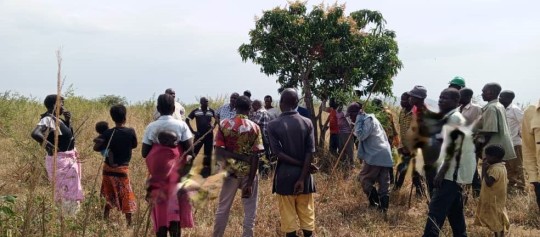
View On WordPress
0 notes
Text
Bunyoro kingdom bicycle racing competition heads to finale
Bunyoro kingdom bicycle racing competition heads to finale
Hon. Byakutaaga hands over a cash prize to one of the winners.
By Our Reporter
There was excitement in Masindi district last Friday as residents enjoyed the Bunyoro Kitara kingdom bicycle cycle racing competition.
Hundreds of people gathered on various roads to watch the bicycle cyclists who were participating in the last competition ahead of the finals that will bring all the past winners…
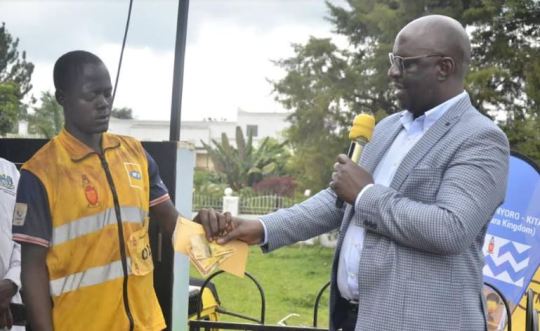
View On WordPress
0 notes
Text
Odino Faccia realizó su recital por la Paz
#Berisso #Política #Religión | #OdinoFaccia realizó su recital por la #Paz
El sábado por la noche, el alcalde de Berisso, Fabián Cagliardi, participó del Concierto por la Paz que llevó adelante el cantautor local Odino Faccia, candidato el Premio Nobel de la Paz por la fundación rusa Gorbachov, en el Cine Teatro Victoria de Berisso.Cabe recordar que la ciudad fue nombrada como la primera Embajada de Paz en Argentina por la ONG “Red Voz por la Paz”, teniendo la finalidad…

View On WordPress
#Aldana Iovanovich#año isabelino#Ayelén Tomasini#Berisso#Buenos Aires#Bunyoro Kitara#Carlos Arias#Carlos de Austria#Cecilia Pozzo#Concierto por la Paz#Entidades Extranjeras#Ezequiel Toti#Fabián Cagliardi#Florencia López Albarrán Cotcheff#Fundación Gorbachov#hermanamiento#Hoima#Imane Dryef#Irina Oslovsky#Juan Pablo Holubyez#María Eva Piermamia#Mario Oporto#Miguel Córdova Cuba#Odino Faccia#Red Voz por la Paz#Uganda
0 notes
Text
Are Bakiga people from Rwanda??
The Kiga people are believed to have originated in Rwanda as mentioned in one of their folk songs – Abakiga twena tukaruga Rwanda, omu Byumba na Ruhenjere – meaning that all of us Bakiga, we came from Rwanda in Byumba and Ruhenjere (called Ruhengeri in Rwanda).[1] Both Byumba and Ruhengeri are Rwandan cities. The Bakiga are believed to be the descendants of Kashyiga, who came to be called Kakiga son of Mbogo from the small Kingdom of Bumbogo in Rwanda later. He came to form the present community of the Bakiga of Kigyezi or Kigezi as a result of immigration.[1]
Before 1700 A.D., Rwanda is believed to have been occupied by the Twa people, and was later on occupied by the second immigration of the Hutu people, and the third was the Tutsi. Rwanda was organised in small states and chiefdoms but under one ruler called the Mwami. Originally, he was also known as Omukama.[1][2] Among the Bakiga, the ruling person was therefore named Mukama, equivalent to Mwami in other parts of Rwanda.[2]
Originally, the name Mukama was not a name, but rather the title of a Ruler. But later on it came to be recognised as a name, implying to one ruling man. In the Bakiga culture, the name was later attributed to GOD as LORD. Among the Bakiga, the name Mukama is not a female name. There are not many Bakiga called by the name Mukama. It is a name that was reserved to be used in the family of the ruling clan, the Bamuhutu, who possess the inheritance powers. If there is any person bearing the name Mukama, he must be a Bamuhutu, specifically a Mungura/Mwitira, or belong to the royal clan of the Bamuhutu.[3] Not even in Rwanda among the Tutsi who took over the Kingdom after Mbogo had been defeated, did they dare to use the name Mukama because it signified a more fundamental power than they had assumed.[4] Similar names could be like Byamukama, Kyomukama, Womukama, Kamukama, Bainomukama and so on. Therefore, the title for the King in Rwanda remained Mwami (Omwami), whereas in the Rukiga (the Kiga Kingdom) they continued to use the title Mukama (Omukama).[3]
In the first stages of the formation of the Kingdom of Rwanda, the major states were Bumbogo, Buriza, and Rukoma. (These areas kept their names, and are located in central Rwanda near the capital city of Kigali). Each of these states was represented by a clan chief. The first Mwami was Mbogo of the small state of Bumbogo. At that time, the Hutu, Tutsi, and Twa ethnic groups were all present in Rwanda, living side by side. Though these three major groups stood out, their indigenous clans remained as the point of reference due to their totems. Mbogo, who belonged to the Abungura clan, today known as Abahitira clan, is believed to have been conquered by his friend Kirima (Cyirima) of the Abanyiginya clan. Kirima accused Mbogo of mistreating the people, and Kirima promised he would be a better chief, though he could not claim to be a King or Umwami. Kirima is believed to have made progress, but his time was short lived by the first invasion of Bunyoro, led by Cwa I son of Nyabwongo. (It remains to verify, whether Nyabwongo is same as Labongo, the first Babiito king of the Bunyoro-Kitara Kingdom in Uganda.)[1]
Until now, Mbogo, the King, is not identified with any tribe, but rather with the clan of the Abahitira (Abungura). He was very old and did not want to fight Kirima. His son Kashyiga (Kakiga) fled to the north, trying to regroup so he could come back and fight.[1][2] The departure of Kakiga left a big wound to the state of Bumbogo. Because Kakiga fled with the royal drum Kamuhagama, Kirima could never claim to be King. The newly established Kingdom was taken over by sympathizers of the Tutsi king Kirima. But then came the first of two invasions of Banyoro (People of Bunyoro) under Kirima’s successor Mukobanya.[1]
In the Rwandan history, Kirima is known as Cyirima I Rugwe. In contrast to the classic chronology, modern historians dispute that his successor, Kigeri I Mukobanya, was his son. They rather insist that he was son of the king of Bugesera, a kingdom located south of Kigali ruled by the clan of Abahondogo. Cyirima stole his wife, and it is assumed that she was already pregnant with Mukobanya.[3] Already at the reign of Cyirima, Mukobanya became a great warrior because he could annex Bumbogo, Buriza, and Rukoma among others, expanding the Rwandan territory from a few hills to a large territory. During his own reign, he inflicted a strong defeat to the mighty Banyoro army, and it had to withdraw from Rwanda. They attacked again during the reign of his successor and defeated him. Mukobanya was the first true expansionist king of Rwanda, but his acceptance as king seems to have been a result of his bravery.[2]
In the mid-eighteenth century, the Rwandan kingdom became far more centralized. It expanded continuously, reaching the shores of Lake Kivu. This expansion was a combination of military conquest with a migration of Rwandan populations spreading their agricultural techniques and social organization. All of these factors extended the political control of the Rwandan king, the Mwami. Once this was established, camps of warriors were established along vulnerable borders to prevent incursions. Only against other well developed kingdoms such as Gisaka, Bugesera and Burundi was expansion carried out primarily by force of arms.
Under the Tutsi monarchy, the economic imbalance between the Hutus and the Tutsis crystallized, a complex political imbalance emerged as the Tutsis formed into a hierarchy dominated by a Mwami or ‘king’. The King was treated as a semi-divine being, responsible for making the country prosper. He adopted the sacred drum Kalinga as the symbol of the King. He also hung the genitals of conquered enemies or rebels on Kalinga. This treatment will later on define the relationship between the Tutsi, the Hutu and the Twa peoples. Originally, the Hutus were among the nobility. They made up 82–85% of the population, and were mostly rich and simple. But later on they were made to live a poor peasant life. With the centralization of the political power, the Tutsis took over the show, monopolized all privileges of the kings, and came to be the ones called the Mwamis. Before the 19th century, the Tutsis held real military power, while the Hutus possessed supernatural power.
The Tutsi monarchy was paralysed by the colonisation through Germany followed by Belgium. It was ended by Grégoire Kayibanda shortly before Rwanda’s independence. He founded a political party known as MDR-Parmehutu (Mouvement Démocratique Republicain Parmehutu; French for: “Parmehutu Democratic Republican Movement”). Kayibanda democratically overthrew the Tutsi monarchy of Mwami Kigeri V in 1961, and appointed a government of Hutus. After independence, in July 1962, Kayibanda became the first president of Rwanda. In the general elections of October 1963, MDR Parmehutu won all seats in Parliament. In the coup of July 1973, Kayibanda was ousted by Major General Juvénal Habyarimana, and the Parmehutu party was dissolved. Habyarimana was a Hutu from the clan of Abungura (Abahitira). It is said that his father migrated to Rwanda from the Bakiga of southern Uganda. He installed himself in the northwest part of Rwanda, where Habyarimana was born and raised. Habyarimana was killed by a criminal squad (has to be determined by a court of justice), who fired missiles at his plane which triggered the genocide. President Paul Kagame was accused by France of this crime. Kagame is a Tutsi who grew up in Uganda as a refugee. He is from the Abega clan, which accounted for many queen mothers in the Abanyiginya dynasty of Rwanda.[5]
Getting back to the Bakiga, it is now clear that Kakiga was responsible for the formation of the Kiga Kingdom, its clans and sub-clans, and all the direct descents of his children. Each clan was identified by a totem and also by what they were forbidden from eating. For example, the Ba-Mungwe’s totem was the bushbuck and they were prohibited from hunting it for food.[5] All these measures were intended for the protection, sustenance, and well-being of the clans as they were not competing for the same food. There are many clans and sub-clans in the Kiga tribe, but the major ones are: Ba-Mungura (the Royal Clan in which the Mukama was supposed to be born), Ba-Musigi (the clan that was supposed to keep the defence of the King or the Mukama), Ba-Mungwe, Ba-Kinyagiro, Ba-Mugiri, Ba-Muhutu, Ba-Mugera, and Ba-Mugyesera, Ba-Mugyeyo. Each of these clans has sub-clans.[5]
The Abukuru b-ekika was a committee of elders chosen by the clan to issue rules and administer justice. If a case was particularly serious and involved more than one clan, the cases would be heard publicly. An Omukuru, ideally a wise elder who knew the customs and traditions of his people, and who could be trusted to give fair advice and justice, was elected to preside over this expanded court.[1]
Kakiga, the son of Mbogo from the state of Bumbogo and of the Abahitira (Abungura) clan, made his move towards the west and settled in the forests of Kagarama, the mountains of the present border of Rwanda and Uganda in Kigezi District. In around 1700, Kakiga established his own community and wished to initiate a new Kingdom, but wanted to go back to fight the Nyoro invaders first. Kakiga found out that the new land was very fertile and had good grass for the cattle. Together with his friends, they made a deal to stay. These became a new group of people called the Abakiga or Bakiga.[2][5]
As time went on, the population grew and Kakiga wanted to expand his localities. He started sending groups to search and conquer. He sent the first group towards the east in the parts of Karweru, where the group of the Abasigi was supposed to conquer. This group was under the leadership of Rwandeme. This was believed to be the strongest group that was to fight the forces of Ankore. Unfortunately, Rwandeme lost the Royal Drum.[3][5] Since the Kingdom could not stand without a drum, Rwandeme never dared to return to Kagarama. He remained in the mountains of Karweru and his group intermarried with the Ankore people. This explains why most of the Abasigi are found in these parts of the region. It also gives the reason to why there are many different accents, intonations, and spellings in the Rukiga language.[3]
Out of anger at his father Mbogo, Kakiga ordered obligatory circumcision of all male children. Many did not support this, but he maintained that every Mungura shall have to be circumcised, and that Kings must be circumcised, too. This is why the Abungura is the only clan in the entire Kiga tribe that undergoes circumcision. The circumcision was to be taken at the eleventh (11th) year. The rest of the Bakiga do not circumcise under cultural obligation. But these days, some take it for other reasons, but not because they have to. Kakiga also left the Kiga legacy of the system of naming.[1] The Kiga people take the family name after their grandfather, or after their father has died.[1] That is why, it is very hard to trace the lineage of the Bakiga through family names. But among different clans, they still hold the norm of the founding father. For instance, Mbogo could be the son of Rwambogo. But in like a seventh generation, Mubangizi could be the son of Mubanga.[2] All in all, the same names would be revolving around in the same family. But nowadays, many educated Bakiga find it useful to use their parents’ names, even if they are still alive. Even the Royal clan does it. This separation and rebellion will mark the complexity of the Kiga community, letting it look as though the community never had a political system.[2]
The major factors that led to the failure of the formation of the Kiga kingdom to the fullest were, mostly, a lack of trust and fear of Kakiga, the lack of a military strong enough for a successful invasion, the sudden prosperity and discovery of fertile lands.[5] Kakiga, though he lost the royal drum, continued to be strong. He sent another group to attack further in the north. This was the group of the Abaromba and the Abahimba. These diffused to most parts of Muko, Rubanda, and Kihihi. Other groups went to Kakore and Mparo, and proceeded to Nyakishenyi and Nyarushanje. We still find a mixture of Ankore and Kinyarwanda accents and intonations in these areas. Kakiga attempted to make another drum, but he could not get testicles of brave enemies to decorate it. He only made declarations that his sons and daughters should not marry any foreigner, because he believed that the pure King should be from Rwanda.
He made his shield out of cattle skin. He promoted agriculture and his tools were mainly the panga, the spear, and the hoe.[5] He enjoyed wrestling, dancing, hunting and keeping cattle. The most common figures of the few known Bungura Royals include: Muhanga (Mubanga), Rwabutare, Kamboji, Kabogo, Katumba, Katamujuna, Kahigyi, Bakunzi, Mbogo, Rwakasole, Mungura, Rwambogo.[2][1] The Abungura, though few as they may be, are still the recognized Royal Clan of the Kiga Tribe and most of them live in outskirts of Kabale Town, and still enjoy their hereditary wealth. They are not wealthy in the strict sense of the word. They are renowned for their love for research and education. The Bungura were also known for their tough leadership, and at times, they are referred to as arrogant, and aggressive.
There has been a variety of experiences in the life of the Bakiga, such as interactions with other Kingdoms, religions, and many other cultures. The Bakiga are very hospitable and enjoy the privilege of having a mixed language. Rukiga, as a language, is a combination of the influence of the accents and alphabets from Rwanda, Ankore, Toro, Bufumbira, and Swahili.[3][6]
Before the Bakiga were educated about Islam and Christianity, they believed in one God. The Bakiga understood God as creator who is neither male or female, known as Ruhanga. God is also known through many attributes. As the supreme elder and the ruler of the universe, he is called Mukama. When associated with the power of the sun, he is Kazooba-Nyamuhanga. In his aspect as the one who makes things grow, he is called Biheeko. Many Bakiga with the influence of Christianity adopted ‘theo-phoric’ names.
While the Bakiga would later be classified as Hutu, originally they considered themselves an entirely separate people. In modern Rwanda, the Hutus of southern Rwanda are called Banyanduga,[7] while the Hutus in the northern Rwanda are collectively referred to as Bakiga.[8]
3 notes
·
View notes
Text
Today in Christian History
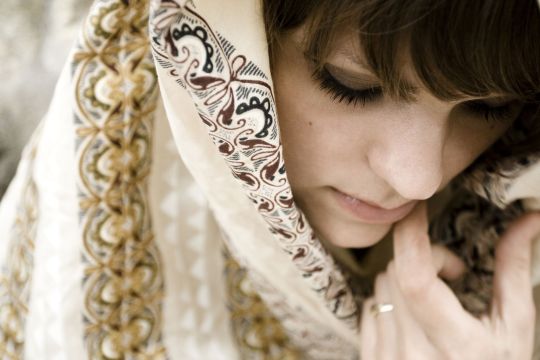
Today is Wednesday, October 29th, the 303rd day of 2020. There are 63 days left in the year.
Today’s Highlight in History:
370: St. Regulus is wrecked off the coast of Scotland with the bones of St. Andrew, who is therefore adopted as the patron saint of Scotland. A site near the wreck becomes the seat of the archbishop of Scotland.
1525: Luther introduces the first complete German mass at the City Church of Wittenberg.
1666: Death in London of Edmund Calamy, the elder, a Puritan supporter of England’s kings during the Civil War and Commonwealth. He authored highly regarded doctrinal works such as The Covenant of Grace and the Covenant of Works.
1675: Death of Andreas Hammerschmidt, one of the most distinguished composers of church music in the seventeenth century.
1768: Death in Essex of Joseph Grigg, an English Presbyterian minister. He had written many hymns, including, “Jesus, and Shall it Ever Be.”
1863: A conference opens in Geneva to found the organization that becomes the International Red Cross. It is spearheaded by Henri Dunant, a businessman influenced by Christian ideals.
1885: Ugandans spear Anglican bishop James Hannington to death. He had been captured eight days earlier.
1895: Death in India of Nehemiah Goreh, a convert from Hinduism to Christianity who had written several books in defense of his new-found faith.
1900: Death of Reformed Swiss theologian Frederic Louis Godet, who was noted for his Commentary on the Gospel of St. John.
1907: The Red Cross awards Orthodox nun Matrona Petrovna Frolova a medal for her relief work during the Russo-Japanese war. She will head a nunnery in Kazan but the Soviets will confiscate the property. Eventually she will be imprisoned, beaten, and executed for her role in resisting Soviet atheism and allegedly hiding church valuables.
1919: Death of A.B. Simpson, founder of the Christian and Missionary Alliance and of Nyack College.
1954: Death of Anna Belle Russell in Corning, New York. She had been a Methodist hymnwriter, best known for the words to “Wonderful, Wonderful Jesus.”
1972: Yustus Ruhindi is enthroned as the first Anglican Church bishop of Bunyoro-Kitara diocese in Uganda.
#Today in Christian History#October 29#death of Edmund Calamy#death of Nehemiah Goreh#Death of Anna Belle Russell#Death of A.B. Simpson#death of James Hannington#Death of Andreas Hammerschmidt#first German language mass at the City Church of Wittenberg
5 notes
·
View notes
Photo

EMBAJADOR DE LA RIMA JOTABÉ EN TRUJILLO (PERÚ). 🥳🇵🇪 Quiero platicarles de un sueño que seguramente les va gustar. Desde los 16 años escribo con rimas y nunca tuve la intención de ser poeta. Amo mis sencillos textos que valoro con máximo honor. Esos mismos textos a los que llamo, simpáticamente, "Los jóvenes" o "Mis jóvenes amigos", fueron y son mis compañeros de viaje dentro de un mundo descampado. Yo simplemente caminé, confiado en que pronto llegaría a saber la razón de todo esto. A lo mejor estaba en los planes de Dios, pues siempre detuvo mi puño y permitía que la culpa me torture hasta arrepentirme. Nunca lo sabré. Por lo pronto y con total alegría recibo la actualización de mi nuevo "Diploma de Embajador de la Rima Jotabé en Trujillo (Perú)", otorgado por mi gran amigo Juan Benito , presidente de la Real Orden Poético - Literaria Juan Benito (Valencia, España). Antes eramos "Orden" y ahora somos "Real Orden", debido a que su Majestad Omukama Solomon (Rey del reino Bunyoro-Kitara) extendió un certificado concediendo el título de «Real». Soy Maestre en la Real Orden. Llevo su distinción como un estandarte y doy cuánto puedo para glorificar su nombre y prestigio. Muchas gracias amigo Juan Benito. Muchas gracias Real Orden. ✍️✍️✍️ . . . . . #poesiaromantica #poesiamoderna #micropoesía #poesiacontemporanea #poesiaenespañol #frasesimple #instapoesia #frasesbonitas💗 #poesiadoolhar #frasesromanticas #micropoesia #poesias #poesiadasimagens #poesiasdeamor #poesíaenespañol #frasesparacompartir #frases😍 #frasesdelalma #frasescortas #frasesparalavida https://www.instagram.com/p/CDGSryLH40M/?igshid=12cef3kjg0zx6
#poesiaromantica#poesiamoderna#micropoesía#poesiacontemporanea#poesiaenespañol#frasesimple#instapoesia#frasesbonitas💗#poesiadoolhar#frasesromanticas#micropoesia#poesias#poesiadasimagens#poesiasdeamor#poesíaenespañol#frasesparacompartir#frases😍#frasesdelalma#frasescortas#frasesparalavida
1 note
·
View note
Photo

NEW in the shop!😍 The word “Munyoro” refers to a person from the Bunyoro-Kitara tribe in Uganda || The Munyoro Native choker necklace || Available #saakiloft.com
https://www.instagram.com/p/BzGW-Xrhznm/?igshid=1cmt2ik8yd70d
#saakiloft#munyoro#africantribe#ancestors#tradition#africa#panafrican#africanfashionbloggers#iguganda#motherland#blackgirlmagic#blackwomen#blackfashion#blackgirlsrock#blackqueen#naturalista#blackowned#melanin#ethnic#fashionblogger#lookdujour#bohemianfashion#decisionsdecisions#jewelryaddict#buyhandmade#saakiloftjewelry#wakanda#wakandaforever#tchalla#lupitanyongo
1 note
·
View note
Photo
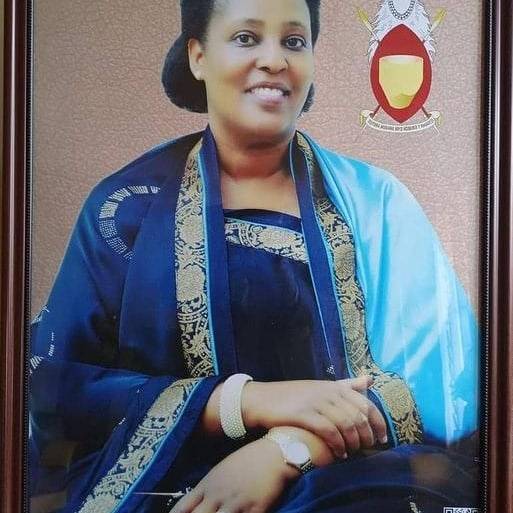
Today is Special. Happy birthday to the Queen of Bunyoro-Kitara Kingdom Omugo Margaret Karunga Adyeeri. We Love you and wish you many more years, may you live to blow a thousand candles! #BunyoroKingdom #VisitBunyoro #DestinationBunyoro #pearlofafricavacations pearlofafrica.travel https://www.instagram.com/p/CUasiNXIBJi/?utm_medium=tumblr
0 notes
Text
BIOGRAPHY: The Life and Times of Ali Kirunda-Kivejinja
By Dr Mohammed Kirunda Nkutu
Ali Kirunda-Kivejinja was born in an aristocratic family that traced its origin from the ancient kingdom of Bunyoro Kitara.
He was born at the height of British colonial occupation of Uganda.
He undertook Islamic instruction before formal education that took him to India,a newly independent nation.
Kivejinja changed his life career path from human medicine to a…
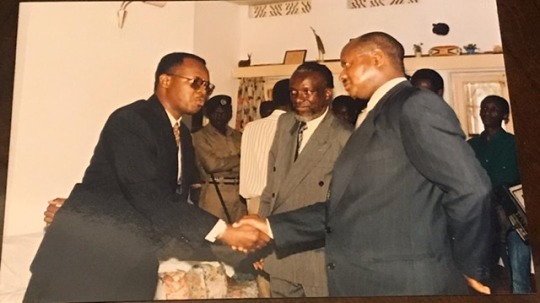
View On WordPress
#a kagoma bobi wine#bbc news bobi wine uganda#bobi wine#bobi wine academic papers#bobi wine age#bobi wine and besigye#bobi wine and his family#bobi wine and kenzo#bobi wine and museveni#bobi wine arua news#bobi wine at cbs#bobi wine biography#bobi wine bobi wange#bobi wine breaking news#bobi wine breaking news today#bobi wine brothers and sisters#bobi wine bukedde news#bobi wine bus dunia#bobi wine by far#bobi wine byekwaaso#bobi wine byekwaso#bobi wine c#bobi wine calorinal#bobi wine campaign#bobi wine cars#bobi wine children#bobi wine concert#bobi wine concert 2020#bobi wine contacts#bobi wine credentials
0 notes
Text
The royal Mparo Tombs of Bunyoro
The royal Mparo Tombs of Bunyoro

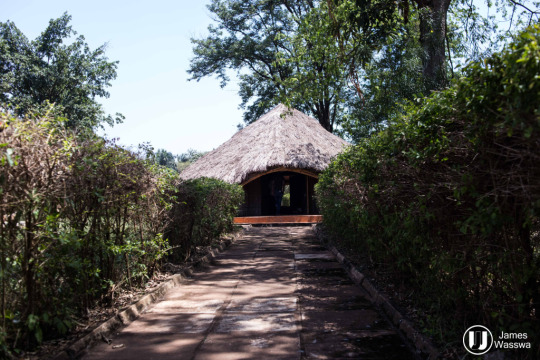
Mparo Tombs is the final resting ground of King Kabalega II who was exiled in Seychelles by the British empire in 1899, Tito Winyi plus several princes, princesses and royals of Bunyoro-Kitara kingdom. The Bunyoro – Kitara Kingdom was once the most powerful Kingdom in the country. Situated in western Uganda, the kingdom comprised of 5 districts, Masindi district, Hoima district, Kiryandongo…
View On WordPress
0 notes
Photo
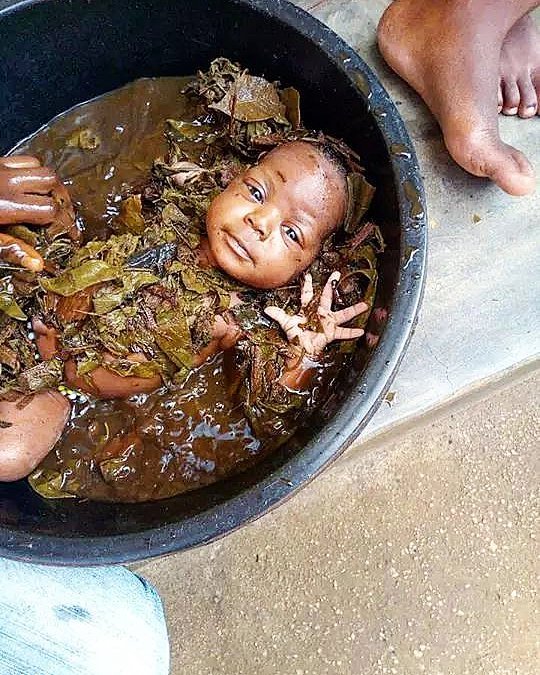
Ekyogero is a popular cultural bath in many communities in Uganda for newborn babies consisting of various herbs. The use of ekyogero is widespread in Uganda, but it is more common among tribes from central, western and south-western Uganda. Rose Namuli, an elderly Muganda woman, says according to the Kiganda culture, the herbal bath is a must for a newborn baby. Traditionally, the baby's grandmother gathered particular herbs like olweza, ebombo, omwolola and omwetango. In addition, she had the responsibility of teaching her daughter-in-law how to boil the herbs and bathe the baby, she explains. According to Namuli, not only is the herbal bath used to cleanse and give the baby a smooth skin, it is also believed to bring good luck to the baby and ward off curses. She adds that ekyogero prevents skin rash (enoga). Norah Ahabwe, an elderly woman from Mbarara, says when a newborn baby is bathed in ekyogero, she gets good luck and is given some to drink to protect it against diseases like malaria. She says the herbal concoction also boosts appetite and cleans the digestive system. Jolly Byenkya, the minister of culture in Bunyoro Kitara Kingdom, says about 10 herbs are gathered and boiled to make ekyogero. She says the baby is bathed in the herbs from the first day of birth up to three months. Byenkya adds that the herbal bath is intended to prevent bad luck and diseases. 🖤 #roots #culture #uganda #HerbHeals #afica #ekyogero #kyogero #cute #baby #future
12 notes
·
View notes
Text
Bunyoro kingdom bicycle races kick off in Kiryandongo district
Bunyoro kingdom bicycle races kick off in Kiryandongo district
By Our Reporter
On Saturday morning, the people of Bunyoro Kitara kingdom took to the streets of Kiryandongo to kick start the long-awaited “egaali za masaza” bicycle races sponsored by MTN Uganda.
The bicycle races were launched in the Kiryandongo district where the riders in anticipation of the races assembled at the Kiryandongo stadium where they set off for the official launch of the…
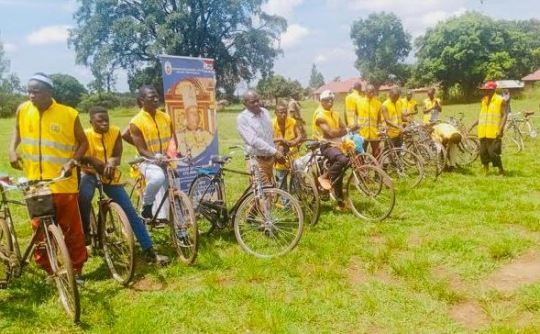
View On WordPress
0 notes